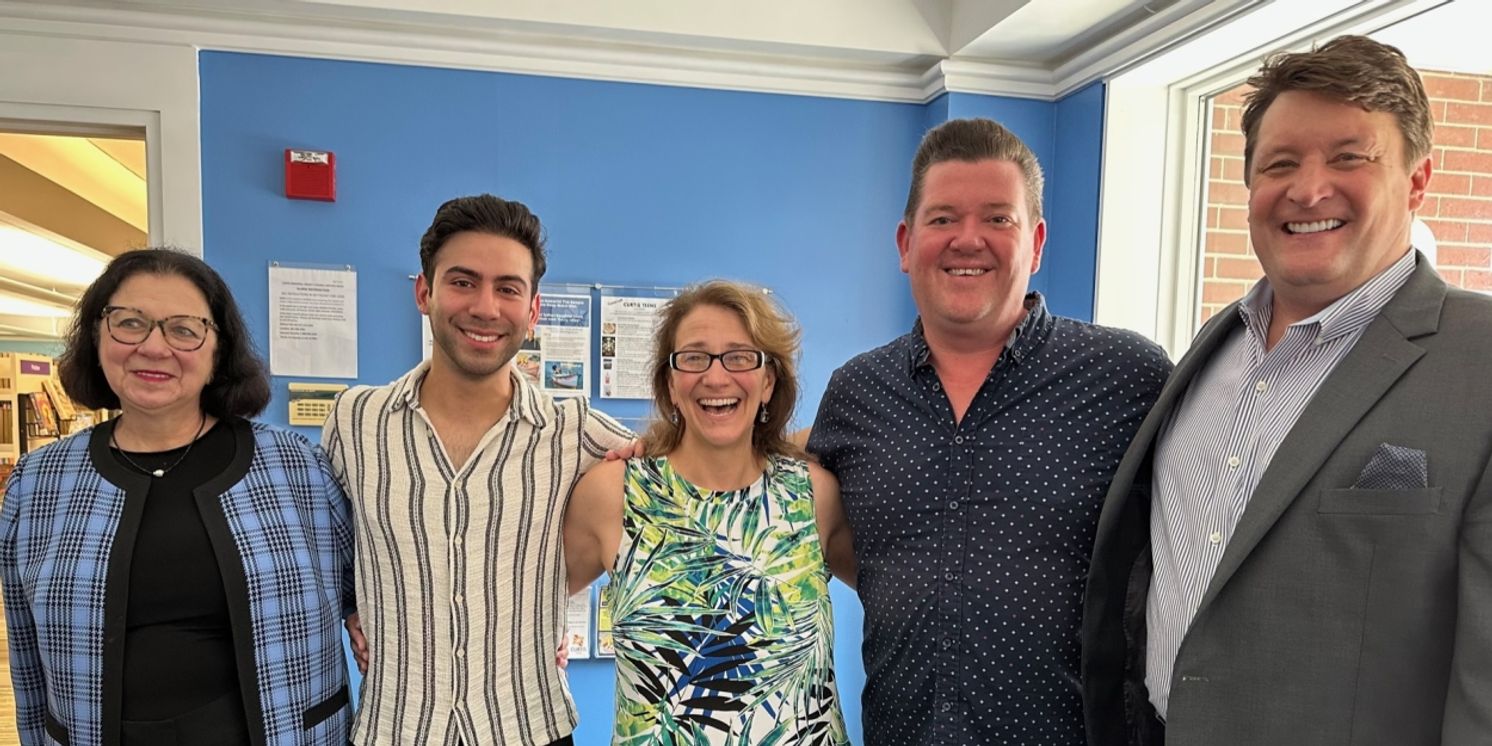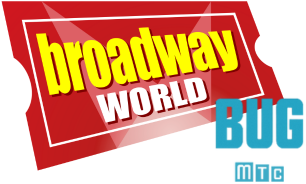Interview: Stewards of the Music: A Conversation with BUDDY HOLLY Cast
Record crowd attends MSMT's peek behind the curtain.

“We are the stewards of the music. We are here to keep it alive and share it with as many people as possible,” says actor Jayson Elliott, who plays the Big Bopper in Maine State Music Theatre’s current production of THE Buddy Holly STORY. Elliott joins Diego Guevara, who portrays Ritchie Valens, Angela C. Howell, director/choreographer/music director who also plays Vi Petty, and MSMT Artistic Director, Curt Dale Clark for a conversation about the musical with Broadway World’s Maine Editor, Carla Maria Verdino-Süllwold at the second Peek Behind the Curtain series of the season. The record-breaking crowd attending the panel discussion mirrors the sold-out houses THE Buddy Holly STORY has been drawing each night at the Pickard Theatre. They have come to celebrate the rock n’ roll legends and to explore what made Buddy Holly and his early colleagues such phenomena of music history.
Elliott speaks of Buddy Holly’s impact as a musical pioneer: “Buddy was so vital to so many other artists becoming who they were. His songs have been covered by so many other bands, too, like The Grateful Dead and the Beatles. There wouldn’t be The Beatles without Buddy Holly.”
Guevara adds: And there would be no Carlos Santana without Ritchie Valens or perhaps not even the Elvis we remember today. I have read that after Ritchie Valens passed, Elvis set up a meeting with Ritchie’s partner, Donna Ludwig, to learn as much as he could about Ritchie.”
“And Bruce Springsteen does Buddy songs to warm up his band,” Howell interjects, ‘’just as Bob Dylan said at his Nobel Prize speech that Buddy was ‘the reason I am an artist.’”
Clark says that he embraced Buddy Holly’s music nine years ago when MSMT produced the show for the first time. He says the decision to repeat the title this year was due to his “wanting to make our audience happy. And look at this room! It is filled with people who love the show!” But, Clark observes, “Whenever we repeat a show, we have to have a reason. In this case, the casting and the design elements make it new. And a great deal of what you see comes from the director. Angela has a stellar track record with this show, so we let her lead.”
Howell notes that the first time she was associated with THE Buddy Holly STORY was in 1999 at Philadelphia’s Walnut Street Theatre and then shortly after that she joined the Broadway tour playing Vi Petty and serving as Assistant Musical Director. From there she moved on to being Musical Director and Director/Choreographer in theatres across the country – her last production before coming to Maine at Tuacahn Amphitheatre in Utah where she worked with some of the same cast. “I come back to Buddy Holly every three to five years,” she smiles. “It’s one of the cheeriest shows you can do.”
She calls it “cheery”, despite the fact that Buddy, the Big Bopper, and Ritchie Valens are all killed in a plane crash near the end of the show. Clark explains that “Despite the ending, Angela and our creatives present the tragic event we all know happened in such a beautiful way, and then immediately bring the audience out of the tragedy and into the twenty-minute Clear Lake Concert. And the audience stands and joins in a celebration.”
The tragic fate of Buddy Holly, J.P. Richardson, and Ritchie Valens is not the only cloud in the joyous musical. The script does not shy away from depicting the racist climate of the 1950s and some of the challenges Buddy Holly and his circle experienced. Howell says she once had a conversation with Holly’s widow, Maria Elena, about allusions to prejudice in the book. “She said,” Howell remembers, “ that back then ‘those kinds of things were actually said to me,’ and I think it is important to depict the era as it was and hopefully show some growth.”
Guevara concurs, commenting, “As a Latino I am very aware of how my people are depicted on stage. What we do [in the theatre] is to put a mirror to society and to show what we all may be guilty of having done or been a part of. It’s important to see so we can learn and grow from the experience. History cannot be erased, but by ending the show the way we do [with the Clear Lake Concert], we celebrate what these artists have created and what we get to take with us forevermore.”
In addition to the script challenges, the production has numerous technical ones as well. Clark cites the “many, many sound challenges. The sound for this show is completely different from TITANIC or 9 TO 5 [THE MUSICAL]. There are live musicians playing live instruments on stage. I have told the sound team that the music is the thing. We don’t care how many techs we see on stage as long as we can hear the music.”
For without question, the audience has come to do just that: to hear the glorious, timeless music. “In this show the fourth wall disappears,” Elliott declares.
“There is a symbiotic relationship between actors and audience; people have invested in the show, and it is magical,” adds Guevara. “In playing Ritchie, I try to find out what was so magnetic about his energy that it drew people in. When you watch a rock concert, the human beings are part of the experience itself.”
“You are the eighteenth cast member in our play,” Elliott says to the assembled gathering. “Our audience here, especially in this community which is as supportive as any I have ever seen, gets this, and we appreciate that!”
THE Buddy Holly STORY runs until July 15 at MSMT’s Pickard Theater on the campus of Bowdoin College, 1 Bath Rd., Brunswick, ME www.msmt.org 207-725-8760
Photo courtesy of MSMT, Sandy Morrell Rooney, photographer
Videos
